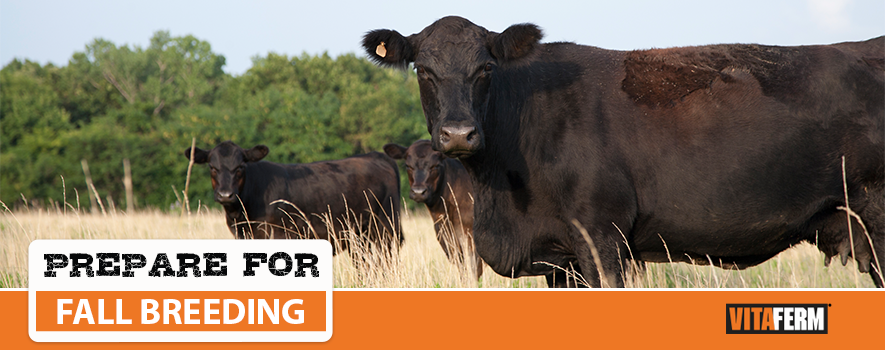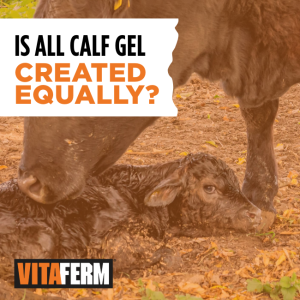Chris Cassady, Ph.D., Beef Technical Sales Manager, BioZyme® Inc

Beef production is vast and diverse and includes the type of calving season producers might choose to best fit their means and resources. The benefits of fall calving are numerous. It’s much easier to avoid heat stress during the breeding season, and since only 25% of the U.S. calf crop are fall-born, the low feeder calf/cull-cow supply during spring can result in elevated market prices. Reproduction determines economic viability and is strongly controlled by nutrition. Now is the time to position your herd with precision nutrition heading into the breeding season.
Reproductive success is not a vital biological function like maintenance, growth or lactation. Therefore, if proper nutrition is not provided, reproduction is the first system to fail. This statement alone explains why 75% of domestic herds are spring calving, because the highest nutritional requirements for early lactation and breeding typically coincide with the availability of quality forage. Fall calving herds can be just as successful economically, and just as there’s “more than one way to skin a cat,” the concept of matching elevated requirements for breeding/early gestation with the proper nutrition is consistent. Available feeds, management and setup just may look a little different for fall calving herds.
A major rule of thumb for reproductive success is making sure females are in a positive plane of nutrition heading into the breeding season. Many producers this year may have thinner cows and heifers due to drought stress or lack of available forages. Don’t panic. Research shows if females are gaining weight, thin cows/heifers (BCS 4) have an equal chance of becoming pregnant compared to their adequate (BCS 5-6) counterparts. Test your forages and feed the best quality you can afford for at least one cycle leading up to breeding and one cycle after. Although it’s popular to supplement fat for its energy density if forage quality is low, keep in mind that too much fat (> 5% of the daily dry matter intake) can inhibit fiber digestibility. Lastly, now is NOT the time to skimp on vitamins and minerals. Zinc and manganese have been linked to ovarian function and cyclicity, and Vitamin E/selenium are important for uterine involution.
Producers often focus their reproductive thoughts on the cow or heifer, but the bull is just as responsible for reproductive success. It’s possible your bulls have been isolated for the last 8-9 months, or they may be recently procured. Either way, I recommend each bull get a breeding soundness exam (BSE), because they likely haven’t been under the same type of nutritional management as the cow herd. Body condition scores of 5-6 are the target, and over conditioned bulls tend to have lower libido and impaired thermoregulation of the testis. Make sure to gradually reduce an overweight bull’s BCS with mid-quality forage over a 45-to-60-day period. Thin bulls are even more problematic because outside of poorer semen quality associated with low BCS, they may not have the energy reserve to even withstand the rigors of a breeding season. Thin bulls should be supplemented with an economical energy source and organic zinc. Zinc is positively associated with semen quality, and organic trace mineral supplementation has proven to improve sperm motility by 7% compared to the inorganic form.
The fall breeding season is quickly approaching, and now is the time to assess your cow herd AND bull nutritional status. The drought has made feeding cattle economically complicated, but proper nutrition is the last place to cut costs in trying times. The value of the current calf market exemplifies exactly how much emphasis should be on premium nutrition targeting reproductive success. Amaferm® is a prebiotic that stimulates rumen fungal branching and bacterial growth. This fuel for the microbiome results in greater digestibility and absorption of nutrients, so that cattle can be in a positive nutritional balance going into December/January breeding. The VitaFerm® Concept•Aid® line of minerals contain Amaferm delivered on a premium mineral containing organic zinc, manganese and copper and elevated levels of vitamin E designed for a quick impact. Reproductive success and proper nutrition are correlated, and since they determine the profit potential in any operation, it’s important to provide each animal with the proper nutritional tools to achieve reproductive success.


